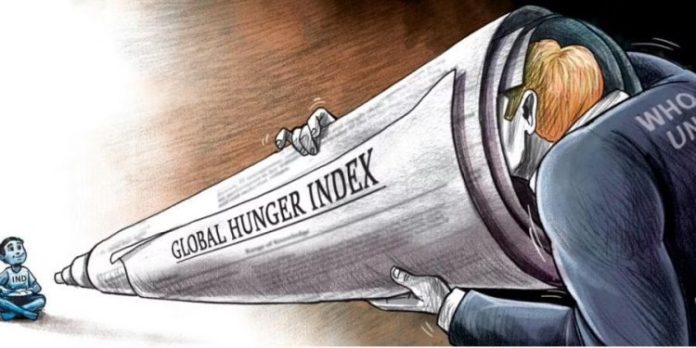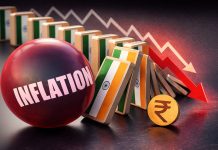Let me begin by recounting a few facts. It is well known that India was the country that came to the rescue of Sri Lanka when the economy of the latter came close to a virtual collapse. Total aid given amounted to more than 1.5 billion USD and included food, medicine, and fuel. Similarly, India sent food aid to Pakistan when they were in trouble (USD 25 million in 2010). India also sent 50,000 metric tons of wheat to Afghanistan to avert what would certainly have been a famine in that country. A separate consignment of medicines was also sent. The aid given was timely and substantial.
Afghanistan was also helped in multiple ways with prestigious constructions, vaccines during the pandemic, training, and education. The country acknowledges this assistance with gratitude. India sent food grains to Nepal in their time of need and assisted Ukraine after the war broke out with Russia. Currently, we have about 700 projects all over the world in which India has adopted the principle of targeting its assistance in the areas considered important to the recipient country based on their perception of their needs rather than thrusting our priorities or imposing our perceptions of their needs on them. India extended vaccines to 27 countries during the pandemic in Asia, Africa, and Latin America. There are several Islamic countries from the Middle East on the list including Yemen and Syria. The goodwill that accrued to India from these initiatives was visible and substantial. Many countries from the Caribbean and Africa openly expressed their gratitude and appreciation in multilateral forums.
India carried out a huge public program of distributing free rations during the pandemic and this continues to this day even after COVID. Yet we are ranked 107 in the GHI (Global Hunger Index), while Sri Lanka is ranked 64 and Pakistan is ranked 84. This is laughable and invites contempt.
However, Indians need not feel depressed after the GHI came into the public space. Sections of the media picked it up and it was being widely touted as an integral part of current Western thinking on India. But Indians have no cause to despair. The GHI is constructed on a fake metric. It is a good illustration of how vested interest groups in the West seek to create a fraudulent narrative and peddle it as authentic. The United States Department of Agriculture (USDA) carried out a study whose results put the issue at rest. The summary is revealing.
What is the Issue? Millions of people around the world lack access to sufficient, safe, and nutritious food. Several factors affect the prevalence of food security—including food availability (agricultural production and market conditions), access to food (economic and physical), stability (price and income shocks), and utilization. Personal income, food prices, and economic inequality are major factors determining the ability of people to access food. Widespread food availability, rising income, and low food prices improve a country’s food security by increasing access to food. Food security can be worsened by declining income levels, high food prices, or food supply shocks.
The USDA report focuses on the availability and access dimensions of food security. Using a demand-driven model that integrates income, food prices, and food supply shocks, the analysis helps USDA and its stakeholders assess food security for 77 countries in Sub-Saharan Africa, North Africa, Latin America, the Caribbean, and Asia. The 2022 report uses macro-economic and international agricultural commodity price projections completed as of August 2021 to estimate and project the potential impact on present and future food insecurity levels.
However, the macroeconomic and international agricultural commodity price estimates were adjusted for the Russian invasion of Ukraine and increase in fertilizer and energy costs beyond expectations as of August 2021. The “Global Trade Analysis Project (GTAP): A Computable General Equilibrium (CGE) Model” describes those adjustments for the low scenario estimates in this report. The special article covers estimates for medium and high scenarios representing higher impacts of these shocks.
The 2022 food insecurity estimates reflect the global and country-level macroeconomic conditions and price shocks observed at the time of estimation. The macroeconomic and international agricultural commodity prices for the 2022 to 2032 period are based on projections completed in August 2021, which account for the economic impact of the pandemic crisis and the rebound in U.S. and global economic growth beginning in 2021.
ERS is a primary source of economic research and analysis from the U.S. Department of Agriculture, providing timely information on economic and policy issues related to agriculture, food, the environment, and rural America.
The main findings for the 77 countries covered by this report are:
Most of the International Food Security Assessment (IFSA) countries across all four regions—Sub-Saharan Africa, North Africa, Latin America and the Caribbean, and Asia—are estimated to experience positive Gross Domestic Product (GDP) per capita growth in 2022, relative to 2021.
Food security in IFSA countries is expected to deteriorate in 2022 due to the continued effects of the COVID-19 pandemic and high input and commodity prices that have been intensified by the Russian military invasion of Ukraine.
The number of food insecure people in 2022 is estimated at 1.3 billion in IFSA countries, an increase of 118.7 million people (9.8 percent) from the 2021 estimate. This estimate reflects an additional 41.7 million people who can be considered food insecure associated with Russia’s military invasion of Ukraine and fertilizer and energy price increases. The special article includes impacts on food insecurity for two additional scenarios illustrating the effects of a prolonged or intensified conflict.
In 2022 results indicate that 32.9 percent of the population of the 77 countries is unable to consume 2,100 kilocalories (kcal) a day, an average caloric level necessary to sustain a healthy and active lifestyle. Food security is projected to improve over the next 10 years. By 2032, the number of food-insecure people is projected to be 577.3 million, falling to 12.4 percent of the population (62.5 percent less than in 2022).
The USDA, ERS demand-oriented International Food Security Assessment (IFSA) model (described in Appendix A) projects food demand and food gaps in 77 low- and middle-income countries through 2032. Food security is evaluated for each country by estimating the share of the population unable to reach a caloric threshold of 2,100 kilocalories per person per day. The intensity of food insecurity for those falling below the minimum caloric target is measured by the gap between projected food demand and this caloric threshold. Food demand is expressed in grain equivalents, based on caloric content to allow aggregation across four separate food groups: the primary grain consumed in the country, other grains, roots and tubers, and all other food.
Average per capita food consumption data are from the United Nations’ Food and Agriculture Organization (FAO) Food Balance Sheets and FAO’s Global Information Early Warning System’s (GIEWS) Country Cereal Balance Sheet. Observed domestic prices are from FAO-GIEWS Food Price Monitoring and Analysis Tool. Tariff data are from the World Bank’s World Integrated Trade Solution. Incomes, exchange rates, and Consumer Price Indexes are from the ERS International Macroeconomic Dataset (USDA, 2021). World prices are from USDA Agricultural Projections to 2031 (USDA, 2022).






























